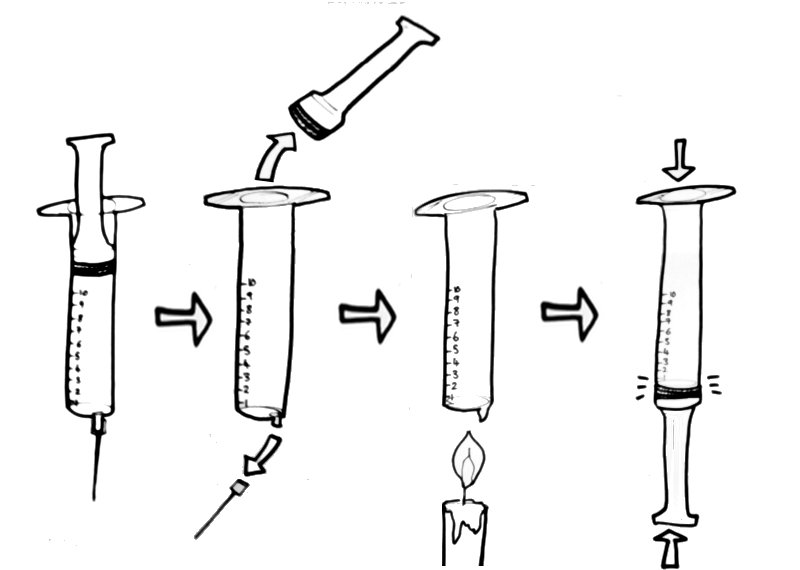Table of Contents
Test Tubes
Test Tubes
Test tubes - plastic
These will work for everything in biology, everything in physics, and everything in chemistry except thermal decomposition of salts. They have the obvious advantage of not breaking. To make these, remove the needle and plunger from 10 mL syringes. Heat the end of the shell where the needle joined in a flame until it melts. Press the molten end against a flat surface (like the end of the plunger) to fuse it closed. If the tube leaks, fuse it again.

Test tubes made this way may be heated in a water bath up to boiling, hot enough for most experiments.
Test tubes - glass
You can purchase glass vacuum sample tubes in bulk from medical and vet- erinary supply shops. These may generally be heated in open flame, although they are not labelled as borosilicate (Pyrex), and will probably break sooner. We have not tested them in Bunsen burners.
For Thermal Decomposition
Test tube holder/tongs
For prolonged heating, you can wrap stiff wire tightly around the lip of the test tube. For shorter heating, you can do the same with a strip of paper or clot. You can also find a carpenter to make large wooden holders. Clothespins work well if you can find them large enough, or if you use smaller tubes, or it you use tubes made from syringes with useful flanges at the top.
Test Tube Stoppers
These can be made by the people who cut up old tires or you can make them yourself from old sandals. However, stoppers are rarely required. If you are using the stopper because you want to shake a flask, consider just using a water bottle with a screw cap. If you want a stopper with a hole for passing out a gas you are producing, again use a water bottle and super glue the tip of a clear plastic pen body into the cap. You can then mount rubber tubing onto the pen tip for a reliable connection.